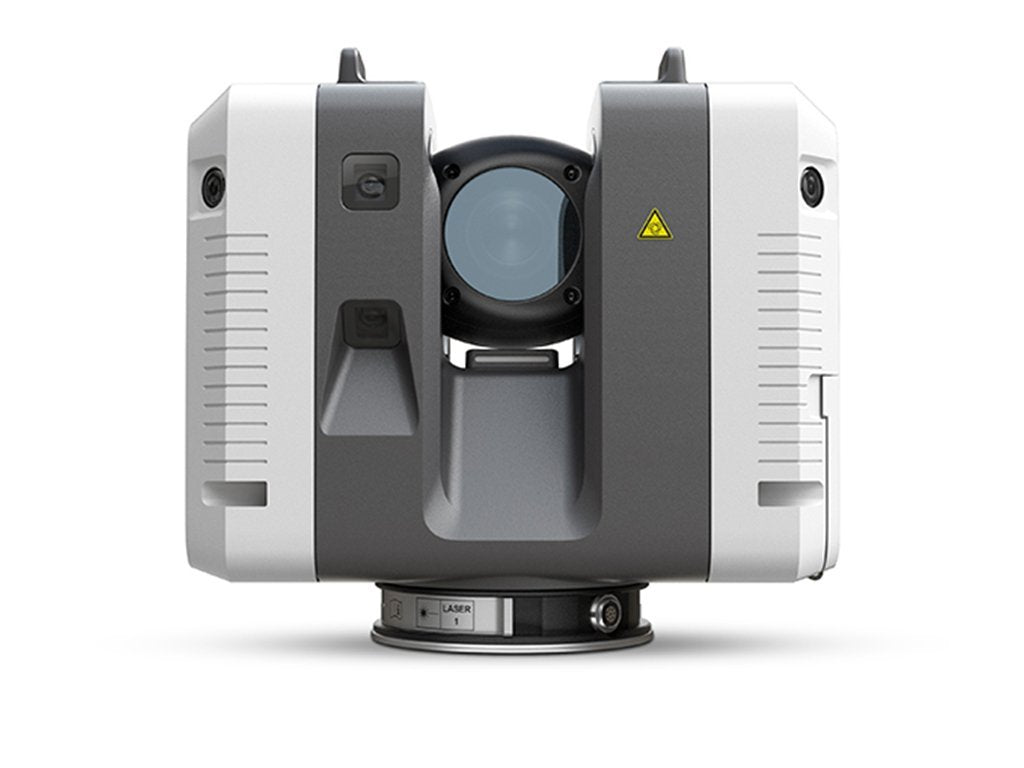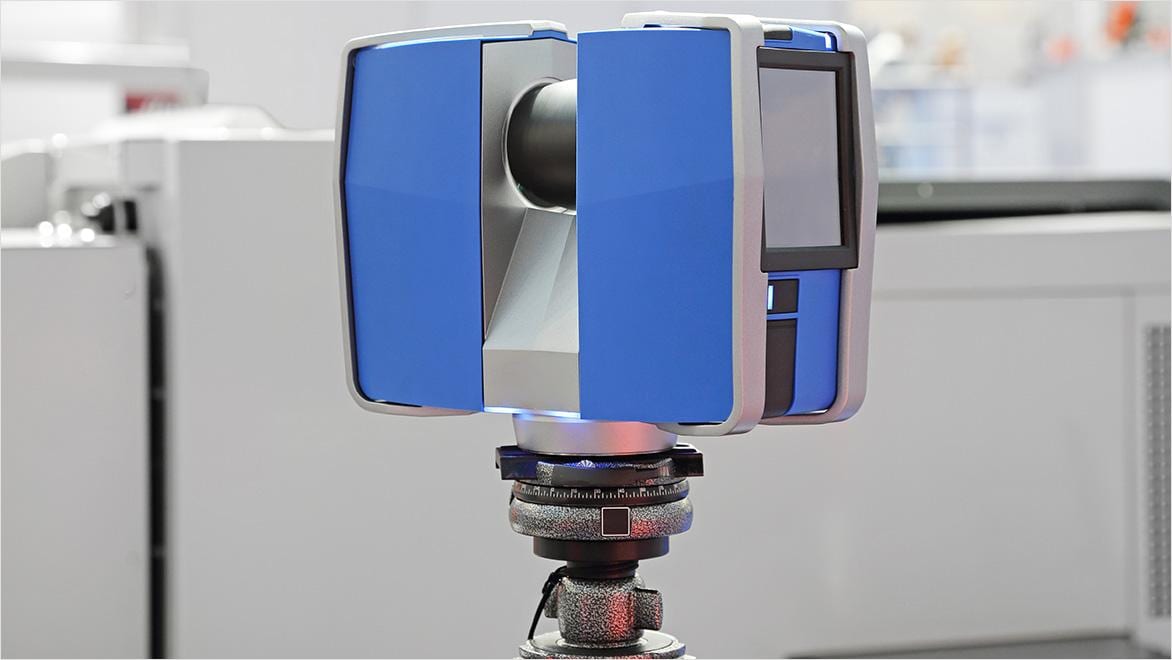What Makes 3D Scanning A Must-Have for Contemporary Designers
Enhancing Production Processes: The Impact of 3D Laser Scanning on Quality Assurance
3D laser scanning technology is changing high quality control in production. By supplying high-resolution data and precise dimensions, it allows makers to determine inconsistencies from specs easily. This advancement not just enhances inspection processes but likewise enhances operational effectiveness. 3D Scanning. The implementation of this innovation comes with its own set of obstacles. Exploring these aspects reveals the wider effects for industries and the future landscape of manufacturing

Comprehending 3D Laser Scanning Innovation
Although 3D laser scanning modern technology has developed significantly over the last few years, its basic principle stays straightforward: recording the specific geometry of things utilizing laser light beams. This technology utilizes laser light to gauge ranges in between the scanner and various factors on an item's surface. The information collected is then processed to create a thorough 3D model, precisely reflecting the measurements and shapes of the checked things.
Normally, 3D laser scanners can be categorized right into 2 primary kinds: call and non-contact scanners. Call scanners literally touch the item to gather measurements, whereas non-contact scanners use laser light beams to catch information from a distance. The flexibility of this modern technology enables its application throughout numerous industries, consisting of production, building, and architecture. Its capability to produce high-resolution models assists in quality assurance, reverse engineering, and fast prototyping, ultimately enhancing style accuracy and efficiency in production processes.
Benefits of 3D Laser Scanning in Manufacturing
As manufacturers look for to enhance performance and precision in their procedures, the advantages of 3D laser scanning have actually become increasingly evident. This innovative technology enables quick and highly accurate measurements of complex geometries, considerably minimizing the time required for top quality checks. By catching in-depth data, suppliers can determine inconsistencies early in the manufacturing procedure, consequently decreasing waste and rework prices.
3D laser scanning assists in much better style recognition, enabling designers to compare as-built problems with initial specifications. This capability assures that any type of inconsistencies are without delay addressed, boosting general product top quality. In enhancement, the innovation supports the creation of digital doubles, which can be made use of for simulations and process optimizations. Consequently, manufacturers not only raise their functional effectiveness however likewise enhance their competitive benefit in the market. Generally, the assimilation of 3D laser scanning stands for a transformative step toward accomplishing higher requirements in making quality control.
Combination of 3D Laser Scanning Into Top Quality Control
Incorporating 3D laser scanning into quality assurance processes enhances the accuracy and effectiveness of examinations throughout manufacturing. This innovation enables suppliers to capture thorough, high-resolution information of elements and settings up, permitting accurate measurements and comparisons versus layout requirements. By employing 3D laser scanning, organizations can determine discrepancies from resistances a lot more properly, which is important for maintaining item honesty.
Real-World Applications and Study
Real-world applications of 3D laser scanning in producing demonstrate its transformative influence across numerous sectors. Aerospace companies utilize this technology to carry out precise examinations of parts, ensuring they meet rigorous security standards. A remarkable situation included a leading airplane supplier that employed 3D laser scanning to simplify its top quality control processes, significantly minimizing assessment times and errors.
In the auto field, manufacturers have executed laser scanning to produce electronic twins of their cars, making it possible for real-time adjustments throughout manufacturing. One vehicle firm reported a 30% decrease in rework costs after integrating this technology right into their production line.
In the consumer goods sector, companies are making use of 3D laser scanning for fast prototyping, permitting for quicker versions and boosted item styles. These applications illustrate just how 3D laser scanning not only improves precision but likewise boosts performance and technology across numerous production domains.
Getting Over Difficulties in Execution
Implementing 3D laser scanning in producing presents numerous difficulties that organizations have to browse to totally realize its benefits. One considerable hurdle is the initial price of devices and software application, which can discourage firms from embracing this innovation. Additionally, incorporating 3D laser scanning into existing process requires conquering resistance to transform among employees, requiring detailed training programs to guarantee efficiency. Data management likewise presents a challenge, as the high quantity of details created by 3D scanning need to be effectively processed and assessed to obtain workable insights. In addition, compatibility problems with heritage systems may impede seamless assimilation, requiring potential upgrades or adjustments. Addressing these difficulties is crucial for manufacturers aiming to improve quality assurance and maximize manufacturing procedures. By creating clear approaches for training, financial investment, and data administration, firms can minimize these challenges and release the transformative capacity of 3D laser scanning in their procedures.
Future Trends in 3D Laser Scanning for Manufacturing
As producing proceeds to develop, the assimilation of 3D laser scanning with boosted automation is expected to change next page manufacturing processes. Boosted data analytics will certainly play a vital duty in optimizing process and enhancing quality assurance. These fads highlight the possibility for higher efficiency and precision in manufacturing environments.

Boosted Automation Integration
The assimilation of automation in production has been gradual, the future of 3D laser scanning is poised to increase this trend considerably. As manufacturing procedures come to be significantly complicated, the need for specific, real-time dimensions expands. 3D laser scanning innovation supplies automated data capture, minimizing labor costs and lessening human error. This combination permits manufacturers to improve quality assurance processes, enabling rapid discovery of inconsistencies i loved this in manufacturing. Additionally, the positioning of 3D laser scanning with robotics and automated systems assists in smooth operations, improving overall performance. As suppliers adopt these advanced modern technologies, they can anticipate improved precision and efficiency, placing themselves competitively in a quickly progressing market. The synergy between automation and 3D laser scanning notes a substantial jump onward in producing development.
Improved Data Analytics
The assimilation of automation has led the way for improvements in information analytics within the domain of 3D laser scanning. Producers are progressively leveraging innovative algorithms and device knowing strategies to evaluate large datasets generated by laser scans. This enhanced data analytics ability permits real-time surveillance of manufacturing procedures, enabling the identification of problems and inconsistencies better than traditional techniques. Anticipating analytics can foresee prospective issues, substantially decreasing downtime and boosting general performance. Furthermore, the capability to picture data in 3 measurements offers deeper insights into manufacturing process, cultivating far better decision-making. As 3D laser scanning modern technology proceeds to advance, the duty of data analytics will become progressively crucial in driving development and keeping affordable advantage in manufacturing.
Frequently Asked Concerns
What Industries Benefit one of the most From 3D Laser Scanning?
The sectors that benefit most from 3D laser scanning include production, building and construction, aerospace, auto, and healthcare. These markets make use of the technology for precision measurements, quality control, and reliable style check my site processes, substantially enhancing general operational performance.
How Does 3D Laser Scanning Contrast to Traditional Dimension Techniques?
3D laser scanning supplies higher precision and speed contrasted to standard dimension techniques. It captures comprehensive geometries promptly, lowering human error and assisting in better analysis, which inevitably improves total quality assurance in numerous markets.
What Is the Price of Executing 3D Laser Scanning Technology?
The price of executing 3D laser scanning innovation varies considerably, usually varying from $10,000 to $100,000, relying on software application, devices, and training. Organizations must consider these expenditures against possible effectiveness and quality enhancements.
Exist Details Software Needs for 3D Laser Scanning?
Yes, 3D laser scanning calls for details software, including information handling and modeling applications. Common choices incorporate CAD software, point cloud handling devices, and specialized applications that promote the assimilation and analysis of checked data for optimal outcomes.
How much time Does a Normal 3D Laser Scanning Refine Take?
A common 3D laser scanning process can take anywhere from a couple of mins to several hours, relying on elements like the dimension of the item, intricacy of the environment, and required level of information for precision.
3D laser scanning innovation is changing high quality control in production. 3D laser scanning technology has evolved significantly in current years, its fundamental principle remains straightforward: capturing the specific geometry of items utilizing laser beams. Incorporating 3D laser scanning into high quality control processes improves the accuracy and performance of evaluations throughout manufacturing (3D Scanning). 3D laser scanning modern technology supplies automated data capture, minimizing labor expenses and minimizing human mistake. The expense of implementing 3D laser scanning innovation differs considerably, generally ranging from $10,000 to $100,000, depending on software program, equipment, and training